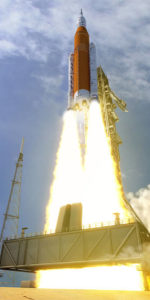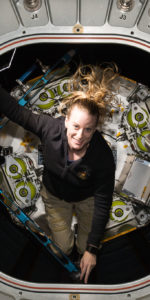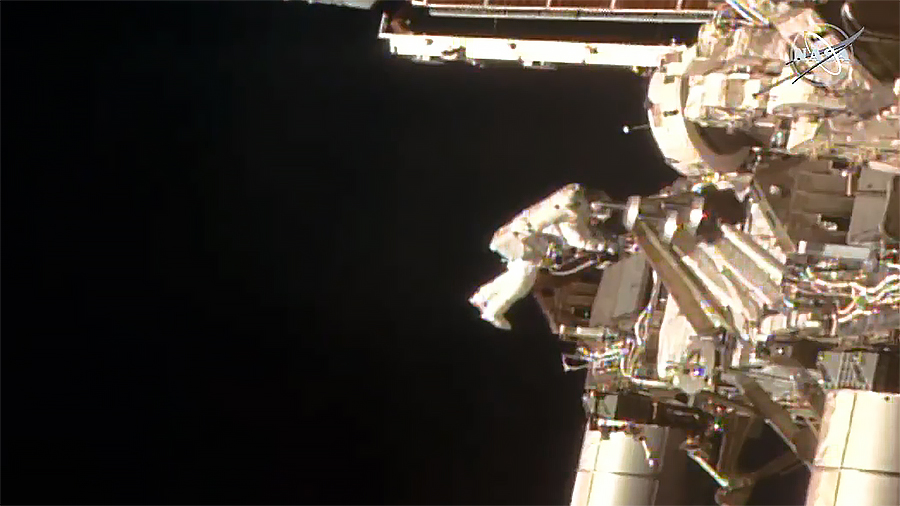
It may have been EVA-66 — the 66th spacewalk in U.S. suits from the Quest airlock, in the absence of the Space Shuttle — but today’s six-hour-and-one-minute Extravehicular Activity outside the International Space Station (ISS) must have resembled “Route 66” for Expedition 63 astronauts Chris Cassidy and Bob Behnken. Only five days since they kicked off the replacement of batteries in the S-6 truss structure, the duo were back outside and again worked through their tasks with solid professional, the occasional touch of humor and all the while working way ahead of the timeline.
Cassidy and Behnken plucked out the last of six aging nickel-hydrogen batteries and popped the last of three brand-new lithium-ion units in its place. They went on to tend to a number of getaheads, including the breaking and resetting of torque on the Channel 3B batteries, the replacement of which is scheduled to get underway with their next EVA on 16 July.
During last Friday’s excursion, the two veteran spacewalkers—both of whom were embarking on their seventh career EVAs—worked ahead of schedule to remove five of the six nickel-hydrogen batteries and install two of the three newer, lighter and more capable lithium-ion units in their place. At first glance, it seemed that wrapping up their Channel 1B work with the final battery replacement would make EVA-66 relatively “light”, but Cassidy and Behnken were faced with a busy workload of “getaheads” to support not only ISS operations in the near term, but also to prepare for future upgrades.
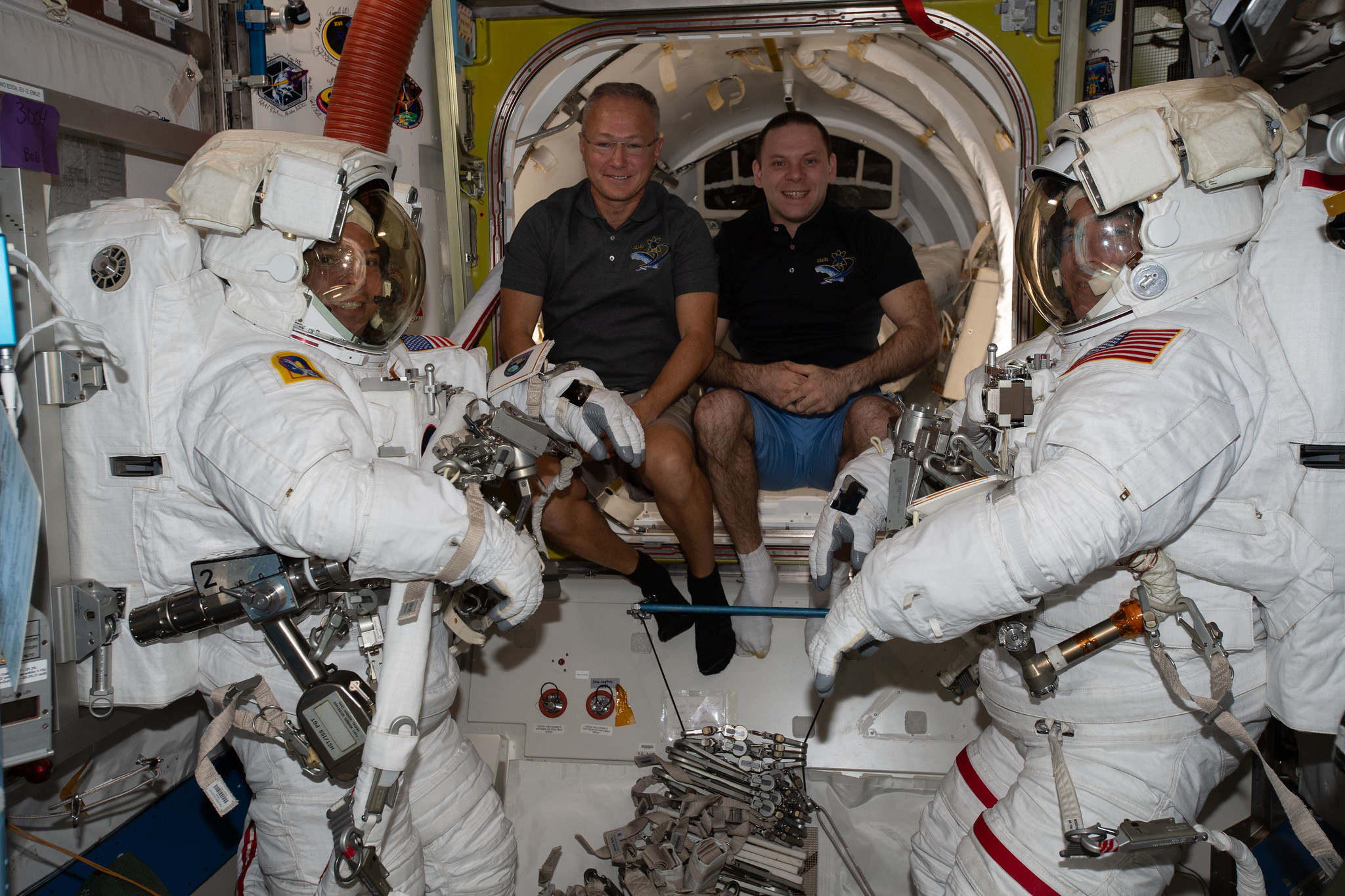
It might have been officially dubbed “EVA-66”, but it must have felt a little like Route 66 for Cassidy and Behnken, who had to traverse over a hundred feet along the Integrated Truss Structure (ITS) from the station’s Quest airlock out to the S-6 truss segment on the far-starboard side of the complex. Efforts to replace 48 nickel-hydrogen batteries in the four trusses—12 each in the S-4, P-4, P-6 and S-6 segments—with 24 lithium-ion units have been ongoing since January 2017. The “inboard” S-4 battery work was done first, followed by the P-4 truss in March 2019, with both tasks requiring a pair of EVAs. However, the P-6 and S-6 trusses lie much further away from the center of the station, out of easy reach of the 57.7-foot-long (17.6-meter) Canadarm2 robotic arm, which placed added demands on the spacewalkers in getting themselves, their tools and the batteries out to the worksite. As such, the P-6 battery work required four EVAs and S-6 is expected to follow suit.
That said, Cassidy and Behnken, both of whom previously served as chief of NASA’s astronaut corps, worked up to two hours ahead of schedule on 26 June, completing all of their EVA-65 tasks and a fair portion of their EVA-66 work. With Expedition 63 crewmates Doug Hurley and Ivan Vagner assisting them with suit-up and airlock activities, the pair pressed smoothly through their final preparations and Quest’s outer hatch opened at 7:13 a.m. EDT, over 20 minutes ahead of schedule. And under the calm and measured professionalism of a Mission Control team led by Flight Director Royce Renfrew, Ground Capcom Jasmin Moghbeli and Spacewalk Officer Jaclyn Kagey, EVA-66 proceeded like clockwork, with a substantial number of getaheads completed as the ISS Program eyes the completion of the S-6 battery work in the mid-July timeframe.
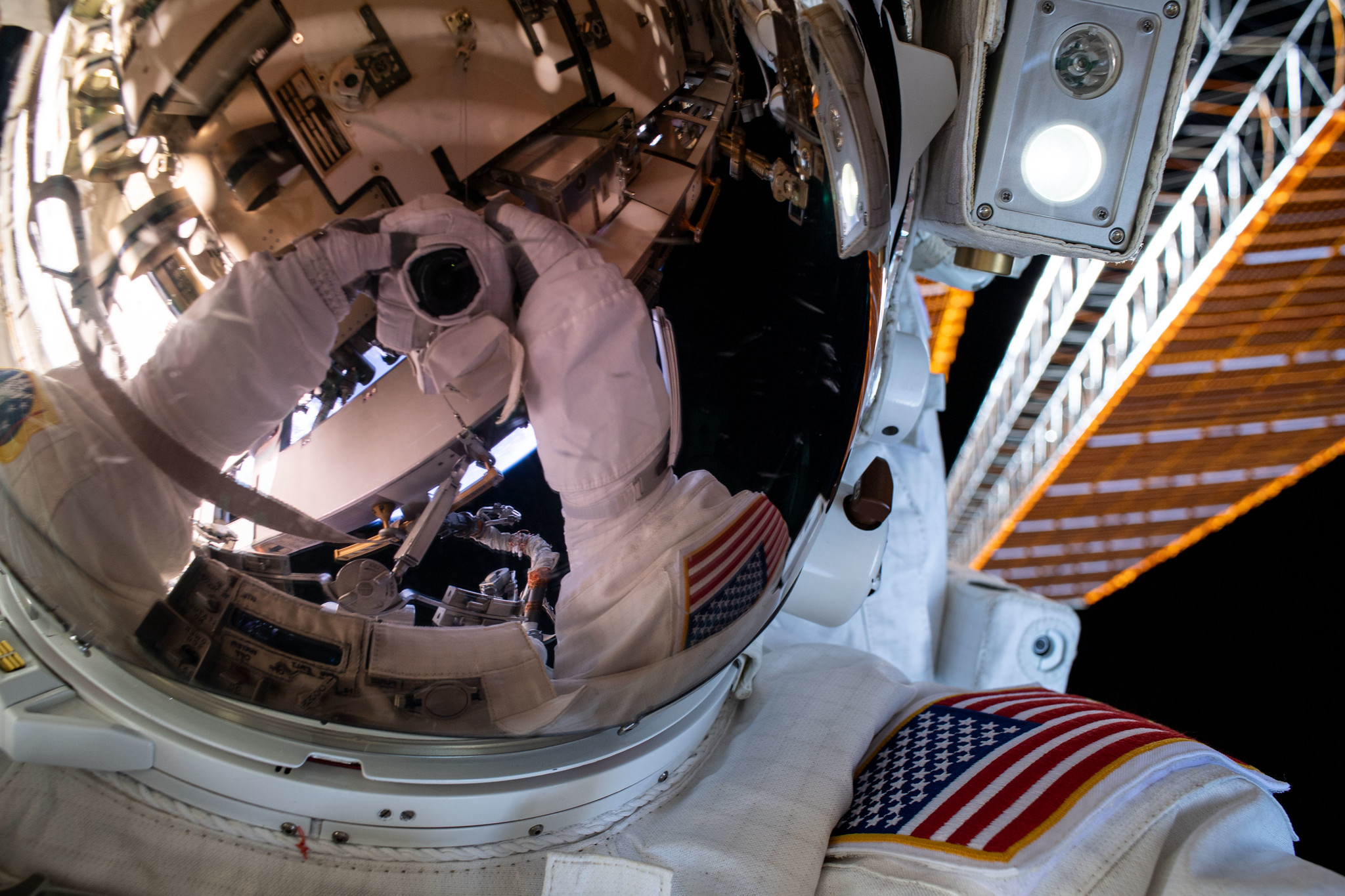
Emerging into the darkness of orbital nighttime, 260 miles (420 km) over the Pacific Ocean, Cassidy and Behnken conducted customary “buddy checks” of each other’s tools and tethers, before hitting the final part of the Channel 1B battery work. Two hours into the EVA, the final nickel-hydrogen battery had been removed and the final lithium-ion one had been slotted smoothly into its place. Next, to prepare for the S-6 Channel 3B replacements—which are due to commence on 16 July, according to NASA’s Dan Huot, in recent comments provided to AmericaSpace—they set about installing handling aids and breaking and resetting torque on those batteries.
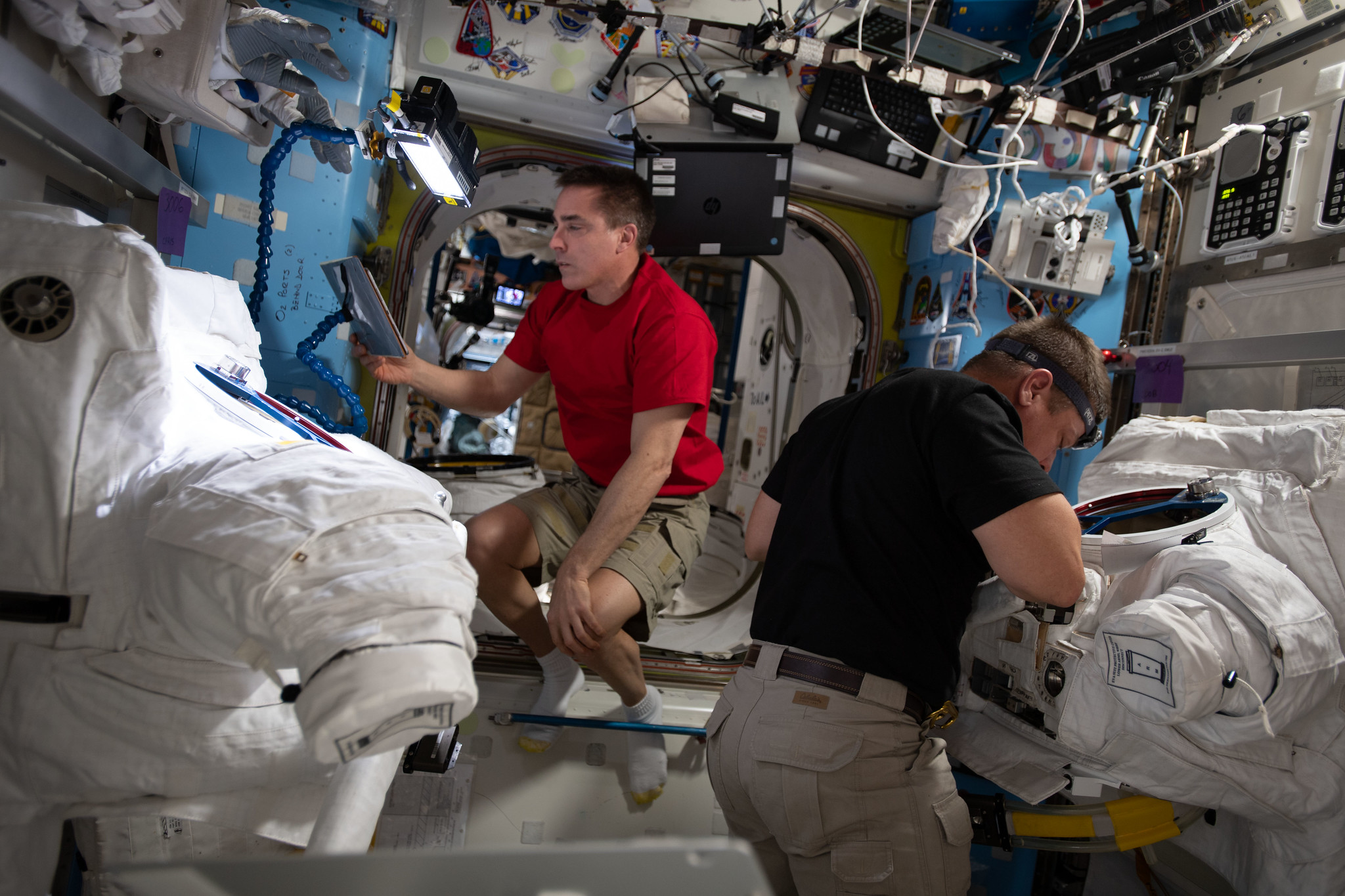
Completion of this work was followed by the two men splitting up to pursue their own discrete getaheads. Cassidy worked to route power and ethernet cables on the S-3 truss for the External Wireless Communication (EWC) system, whilst Behnken labored fruitlessly to remove a so-called “H-fixture” from the base mast canister of the solar array. “Release a device called an H-fixture on the S-4 truss’ Channel 3A location in advance of future solar upgrades (the first of six such H-fixture releases),” Mr. Huot told AmericaSpace. “These devices were installed when the arrays were first launched to protect for a possible jettison of the arrays.” Unfortunately, Behnken was unable to remove the stubborn H-fixture and was directed to secure it back into place.
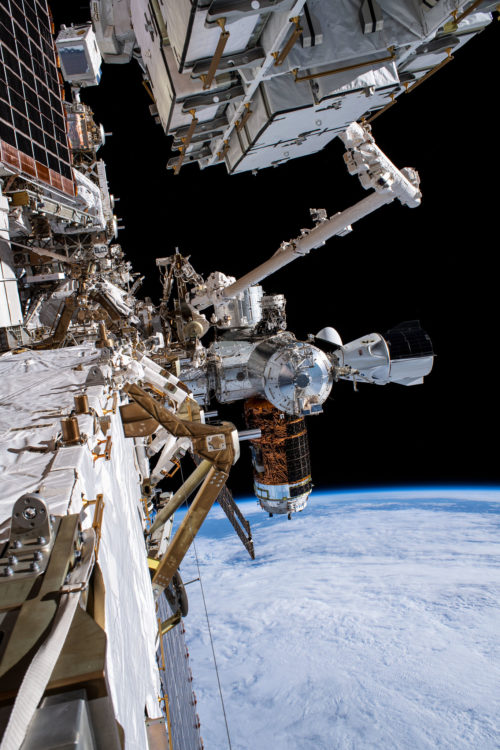
It was readily apparent from the comm chatter that EVA crew and ground crew alike were consummate professionals, although a moment of levity arose from Moghbeli’s regular number of “cautions”, issued to Cassidy and Behnken to avoid them snagging their suits on sharp edges or causing inadvertent damage to themselves or station systems. At one point, with keen humor in his voice, Cassidy light-heartedly grumbled at the “never-ending” number of cautions. To which Moghbeli—whose astronaut class graduated earlier in 2020 as the first of the “Artemis Generation”—replied with a giggle: “I know you love them!”
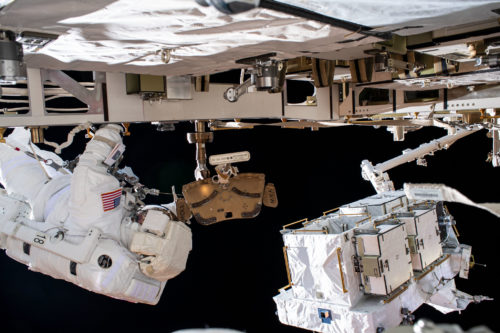
The spacewalkers wrapped up their final activities after six hours and a minute. Returning inside the station, both have now logged eight spacewalks apiece; with Behnken’s total standing at 49 hours and 41 minutes and that of Cassidy at 43 hours and 22 minutes. And in doing so, both astronauts have pushed themselves up the list of the world’s most experienced spacewalkers. Behnken now sits in 11th place on the list of most seasoned spacewalkers of all time, whilst Cassidy resides at No. 21. Current plans call for their next EVA together on 16 July to begin the Channel 3B battery work, with an expectation that another “would follow some days after”, according to Mr. Huot. For the next pair of spacewalks, the men will switch roles, with Behnken taking on the mantle of EV1 and Cassidy as EV2.




